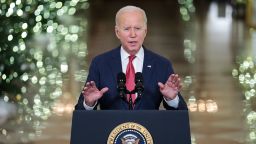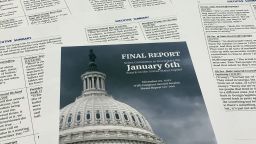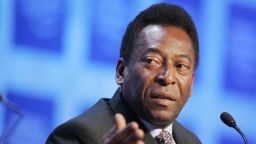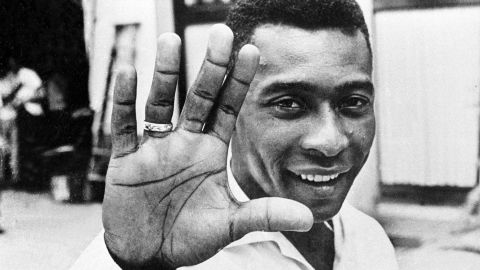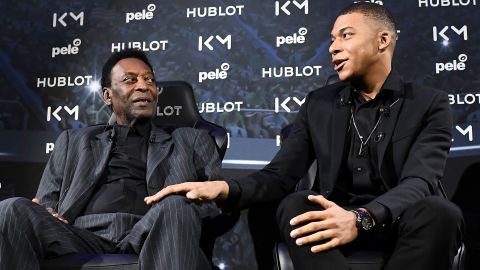
Will future historians look back and declare 2022 as the year that Donald Trump’s spell finally began to lose its luster?
Reports of Trump’s political demise have been greatly exaggerated for years now. But this time feels different.
We saw hints of Trump’s political decline in late 2021, but his 2022 got off to a rocky start with a rally in Arizona that failed to recapture his old magic. My observation at the time was that Trump “needs new material, and fast, because if his Arizona rally shows anything, it’s that the old routine just doesn’t land anymore.”
Throughout the year, Trump’s problems only increased.
In February, he praised Vladimir Putin’s use of propaganda to justify Russia’s invasion of Ukraine as “genius.” There was nothing new about Trump praising Putin, but his assessment of Putin’s savvy strategy turned laughable when Ukraine’s strong resistance made Putin look weak.
Trump also bet on the wrong horses in the domestic political arena, as Republican backlash over Trump’s endorsement of Dr. Oz (who would go on to lose his U.S. Senate race in November) began to mount in early spring.
The trend of Republicans publicly criticizing Trump continued into the summer, with the Jan. 6 committee, which wisely focused on Republican witnesses testifying about Trump’s behavior.
There is little evidence that the hearings significantly changed minds about Trump. But around the time they kicked off in earnest, a Granite State Poll showed that, for the first time, Ron DeSantis had a lead over Trump among likely GOP primary voters in New Hampshire.
Next came the FBI’s search of Trump’s residence at Mar-a-Lago. Ironically, the raid seemed to at least briefly help Trump and kill DeSantis’ momentum. But the rally-around-the-flag momentum that Trump received by playing victim to the deep state was short-lived. It also served to showcase some ugly fans inclined to target the FBI for violence, earning Republican rebukes.
In August, Trump’s biggest blow of the year was foreshadowed when Sen. Mitch McConnell acknowledged that concerns about “candidate quality” made it less likely Republicans would flip the Senate.
At this point, Herschel Walker, Trump’s hand-picked Senate nominee in Georgia, had already admitted to fathering illegitimate children; revelations that he also had paid for an abortion, as The Daily Beast reported, only added to the foreshadowing.
Unlike much of his presidency (where aides would stop Trump, slow-walk his orders, or otherwise water-down his craziness), McConnell and the GOP establishment acceded to at least some of Trump’s primary selections. This meant that Trump largely assumed responsibility for the 2022 midterm results (he has, of course, tried to claim otherwise).
Giving him what he wanted was tragic—for Trump.
The midterms turned out to be a repudiation of Trumpism, and the absence of a red wave was a breaking point for many Republicans. That’s right: Countless Republicans who were willing to stand by Trump through Charlottesville, two impeachments, a big lie, and an attempted coup, suddenly discovered that losing elections was a bridge too far.
Many right-wingers were also outraged by him calling Ron DeSantis “Ron DeSanctimious.”
Rather than being chastened or biding his time, Trump quickly launched his 2024 presidential campaign. Aside from the horrifically bad timing, it was a low-energy affair. Trump soon proceeded to celebrate Thanksgiving week by dining with anti-Semite Kanye West and white nationalist Nick Fuentes, leading to yet another round of criticism from fellow Republicans.
As Christmas approached, Trump unveiled a “major announcement”: The release of a $99 NFT. Everyone from Steve Bannon to QAnon criticized the grift. “We have a nation going down the toilet, and Donald Trump is selling Pokémon cards. No thanks,” Blaze TV host Chad Prather wrote.
The Jan. 6 committee voted on Dec. 19 to approve a criminal referral against Trump. And on the last business day of 2022, after years of wrangling, six years of Trump’s tax returns were finally released.
Any way you slice it, 2022 was a terrible, horrible, no good, very bad year for Donald Trump. And there’s little reason to think 2023 will be any better.
After all, while Trump remains a clear frontrunner, DeSantis has emerged as a legitimate potential challenger for the 2024 Republican presidential nomination. And pop culture figures like Kanye West and Elon Musk have supplanted Trump in the attention economy.
To be sure, Trump could play Harry Houdini once again in 2023. The Access Hollywood tape that emerged in 2016 and the Capitol Riot five years later earned lots of Republican outrage—only for him to somehow emerge stronger than ever.
But nothing we have seen in the last year or so suggests that he has the same energy or magic that allowed him to escape any accountability in the past.
After years of failing upward, gravity finally reasserted itself in 2022. The chickens, it seems, have come home to roost. Whether a fellow Republican can successfully step into the void remains to be seen.
"Opinion" - Google News
January 01, 2023 at 10:00AM
https://ift.tt/SubsYXT
Why Trump's Reign of Republican Terror Is Really Ending - The Daily Beast
"Opinion" - Google News
https://ift.tt/My9GEeC
Shoes Man Tutorial
Pos News Update
Meme Update
Korean Entertainment News
Japan News Update

